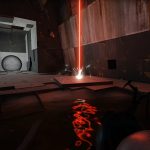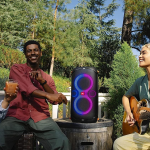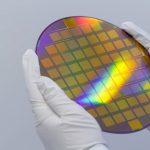
There are enough high-tech robotic cleaners on the market right now that no busy human needs to be vacuuming or mopping in 2021 — especially if your domicile doubles as your office.
While they all promise to zoom around and clean your floors without any snags, how many really deliver on their glossy selling points in real life? Some lesser models clumsily bump around your furniture, spin around dust, or get completely thrown off by a dog toy in their path.
Looking at what was out there, ECOVACS set out to advance home automation by making robotic cleaners work for every family. These robotic cleaners actually work like the laser-wielding, sci-fi robots we’ve been waiting for since grade school to do our chores and make our lives easier.
The vision: to design intelligent machines that can handle life’s dirty work, so you don’t have to. Compared to less tech-savvy housekeeping bots, these rolling clean freaks work quietly and efficiently, and they can easily navigate an obstacle course of slippers, chairs, and cords, where other robotic cleaners get tripped up.
For truly hands-free chores, these next-gen robotic cleaners are also fun to watch when your brain needs some time off. Here are some ways ECOVACS has made robotic cleaners smarter.
Most robotic vacuums get stuck, tangled, and run into things on the floor
The latest generation DEEBOTS have advanced TrueDetect and AIVI technology for optimized mapping and obstacle avoidance. This robotic cleaner can “see” the way your phone does. For facial recognition, your smartphones use 3D-structured light technology. Like your phone, the robotic cleaner uses this same tech to scan for objects, getting a fast and accurate 3D image of the space — down to the millimeter. The ability to detect and get around hurdles — like that pile of cords on the floor — is 10 times more exacting than infrared technology.
Taking this one step further, the DEEBOT T8 AIVI has a built-in camera and AIVI (artificial intelligence and visual interpretation) capabilities, which enable it to store and recall memories of objects and analyze how to best clean around them.
Random navigation means Inefficient cleaning and missed spots
Advanced mapping makes cleaning more efficient, fast, and customizable. ECOVACS has pioneered the most advanced navigation technology, LIDAR, found in its TrueMapping technology. TrueMapping has evolved from “laser navigation” to “aerospace-level laser navigation,” using direct time-of-flight (dToF) laser sensors.
They’ve integrated the same cutting-edge technology that powers self-driving cars and drones into their robotic cleaners. These mighty, floor-cleaning machines use continuous, 360-degree laser scanning to sense depth and create a precise map of the floor in seconds. As a result, the bot doesn’t miss spots or need to go over the same area again (and again, and again).
Compared to other laser technologies, dToF performs with twice the range and quadruple the accuracy. It can detect objects as small as 2mm (that’s pretty much the height of two stacked pennies) and performs well in brightly lit or dark rooms. These super-advanced bells and whistles enable custom cleaning, such as creating keep-out zones or adjusting settings to clean differently on various surfaces.
It only vacuums and doesn’t mop — or, if it does have dual functionality, it spills water on rugs and carpets
OZMO combines vacuuming and mopping — with all-important carpet detection — for simultaneous cleaning in one sweep. Multifunctional appliances save time and get more done with a single machine — without taking up precious closet space. In 2017, ECOVACS was the first to market a robo-vac and robo-mop in one product for the ultimate robotic cleaner. Their patented OZMO technology is now a standard feature, which removes up to 99.26% of bacteria from floors, according to a Japanese research lab. These nimble machines can auto-detect carpet, so you don’t end up with a sopping mess — including along your carpet’s edges.
High-powered vacuums are noisy
ECOVACS found the perfect balance of high-power suction and low-level noise — even at up to 2,600 Pa, you don’t need noise-cancelling headphones to think while your robotic cleaner is working. When it comes to how much a robotic cleaner can suck up, Pa stands for Pascal, or the unit for measuring atmospheric pressure. To give you a sense, 2,000 is high; 2,600 is superpowered. They’ve taken the volume down a notch but kept the cleaning power amped way up.
You have to pick up the robot in the middle of cleaning to empty the dustbin
Another area in which ECOVACS have led the way is auto-empty stations: DEEBOTs were the first laser-equipped robots at retail to come with this handy feature. Models with a + sign next to their name can conveniently self-empty their dustbin into the station for months of maintenance-free cleaning. They also have hypoallergenic dust bags to prevent allergies.
To learn more about the features and benefits of ECOVACS DEEBOT models, visit MeetDEEBOT.com.
Powered by WPeMatico






